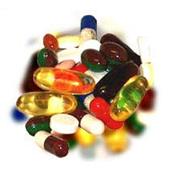UPCOMING EVENTS
View full calendarWater Testing
 When should I get my water tested?
When should I get my water tested?
 Test if...
Test if...
- Your well does not meet construction codes.
- The area around the wellhead has been flooded or submerged.
- Back-siphoning has occurred.
- You have mixed or used pesticides near the well, or have spilled pesticides or fuel near the well.
- You have a heating oil tank or underground fuel tank near the well that you know has leaked.
- You are pregnant, are planning a pregnancy, or have an infant less than 6 months old.
- Your septic system absorption field, or your neighbor's, is close to the well (within 100 feet).
- Wondering about the quality of your irrigation water? (Contact your local county extension agent or the USU Analytics Lab.)
What should I test for?
Test annually for:
- Nitrates
- Coliform Bacteria
Testing for fecal coliform and/or total bacteria is a good place to start. Depending on the results of that test, you may be advised to test for other contaminants such as metals, sediment, or organic pollutants. A presence of live coliforms in your water is an indication that surface water is entering your drinking water, which means that other pollutants will likely be found in your water as well.
Another common starting test for drinking water is nitrates. A value higher than 10 ppm (mg/L) can threaten your health especially if you are pregnant or nursing, and can threaten the health of infants. A presence of nitrates in your water indicates surface water contamination of your drinking water.
If your water has specific symptoms and you would like to figure out what to test for check the table below or view North Dakota State University Water Quality Extension's page, What's Wrong With My Water?.
For more information about managing your well or to take a free class about private wells check out: The Private Well Class.
|
Conditions or Nearby Activities: |
Test for: |
|
Recurring gastro-intestinal illness |
Coliform bacteria |
|
Household plumbing contains lead |
pH, lead, copper |
|
Radon in indoor air or region is radon rich |
Radon |
|
Corrosion of pipes, plumbing |
Corrosion, pH, lead |
|
Nearby areas of intensive agriculture |
Nitrate, pesticides, coliform bacteria |
|
Coal or other mining operations nearby |
Metals, pH, corrosion |
|
Gas drilling operations nearby |
Chloride, sodium, barium, strontium |
|
Dump, junkyard, landfill, factory, gas station, or dry- cleaning operation nearby |
Volatile organic compounds, total dissolved solids, pH, sulfate, chloride, metals |
|
Odor of gasoline or fuel oil, and near gas station or buried fuel tanks |
Volatile organic compounds |
|
Objectionable taste or smell |
Hydrogen sulfide, corrosion, metals |
|
Stained plumbing fixtures, laundry |
Iron, copper, manganese |
|
Salty taste and seawater, or a heavily salted roadway nearby |
Chloride, total dissolved solids, sodium |
|
Scaly residues, soaps don’t lather |
Hardness |
|
Rapid wear of water treatment equipment |
pH, corrosion |
|
Water softener needed to treat hardness |
Manganese, iron |
|
Water appears cloudy, frothy, or colored |
Color, detergents |
How do I collect a sample?
- First, call a lab near you that is certified for the test you need. (See next section.)
- Use the appropriate container for the type of sample.
- Store the sample carefully according to the instructions before taking it to the lab.
- If you receive a container from the lab for a bacterial test, do not rinse it out. It has been sterilized and contains a preservative.
- Some samples must be kept cool and delivered to the lab within a short period of time
(often less than 24 hours) or they will not be analyzed.
A poorly collected sample wastes your money and is worse than no sample at all.
Where do I get the water analyzed?
Use the button below for a list of labs in Utah that test water. NOTE: Not all certified labs test for all pollutants. Check with the lab before you collect any samples - collections methods, sample storage, and delivery directions are often important.
How do I interpret the results? What do they mean?
- Find out what the results mean using CSU's online interpretation tool.
- Compare your results to the Utah drinking water standards.
- Look at the EPA's ground water and drinking water web page for more information.
- If any values exceed the standards, DO NOT DRINK THE WATER!
- Re-test if bacteria, nitrate or organic parameters exceed the standards.
- If concentrations are increasing between sampling, try to determine and mitigate the sources of pollutants.
What are some common drinking water pollutants?
|
|||
 |
Arsenic (pdf) |  |
Coliform Bacteria (pdf) (for more information on bacteria click here) |
 |
Lead (pdf) |
 |
Pharmaceuticals (web) |
 |
Nitrate (pdf) |  |
Drinking Water Treatment Systems (pdf) |
